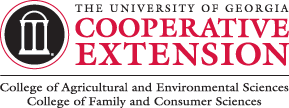The University of Georgia
College of Agricultural and Environmental Sciences
College of Agricultural and Environmental Sciences
The 2014 production season will be remembered as the year the rains stopped. Stand establishment and early-mid season growth and fruit set were generally good. Drier conditions became prevalent in July and August, however, depending upon location. These dry conditions persisted through harvest, except for the early part of September. Dryland yields were highly variable ranging from poor to very good depending on planting date and rainfall. Irrigated yields were generally good to excellent. The most common challenges for growers in 2014 included Palmer amaranth, thrips, nematodes, and droughty conditions. Variety selection remains an important issue. New varieties are being released in a rapid manner due to increased competition and advancements by industry. Many of the newer varieties performed very well for growers in 2014.
Download the entire report: 2014 Cotton Research-Extension Report (in PDF format) or use the Table of Contents below to click on, view, and download individual papers.
INTRODUCTION
AGRICULTURAL AND APPLIED ECONOMICS
CROP AND SOIL SCIENCES
- 2014 Cotton OVT Variety Trials
- The Effect of Delta-12 Fatty Acid Desaturase (FAD) Gene Expression on Seedling Vigor Under Cool Temperatures
- The Effect of Irrigation Delivery Method on Lint Yield in Two Years With Contrasting Water Avalability
- Photosynthetic Response of Two Commercial Cotton Cultivars to Imposed Drought Using Predawn Leaf Water Potential as an Irrigation Trigger
- The Effect of Primed Acclimation Irrigation Strategies on Cotton Water Use Efficiencies
- Physiological Responses to Primed Acclimation Irrigation Treatments: An Initial Study
- Irrigation Termination and Fiber Quality: Subsurface Drip Irrigation Versus Overhead
ENTOMOLOGY
PLANT PATHOLOGY


